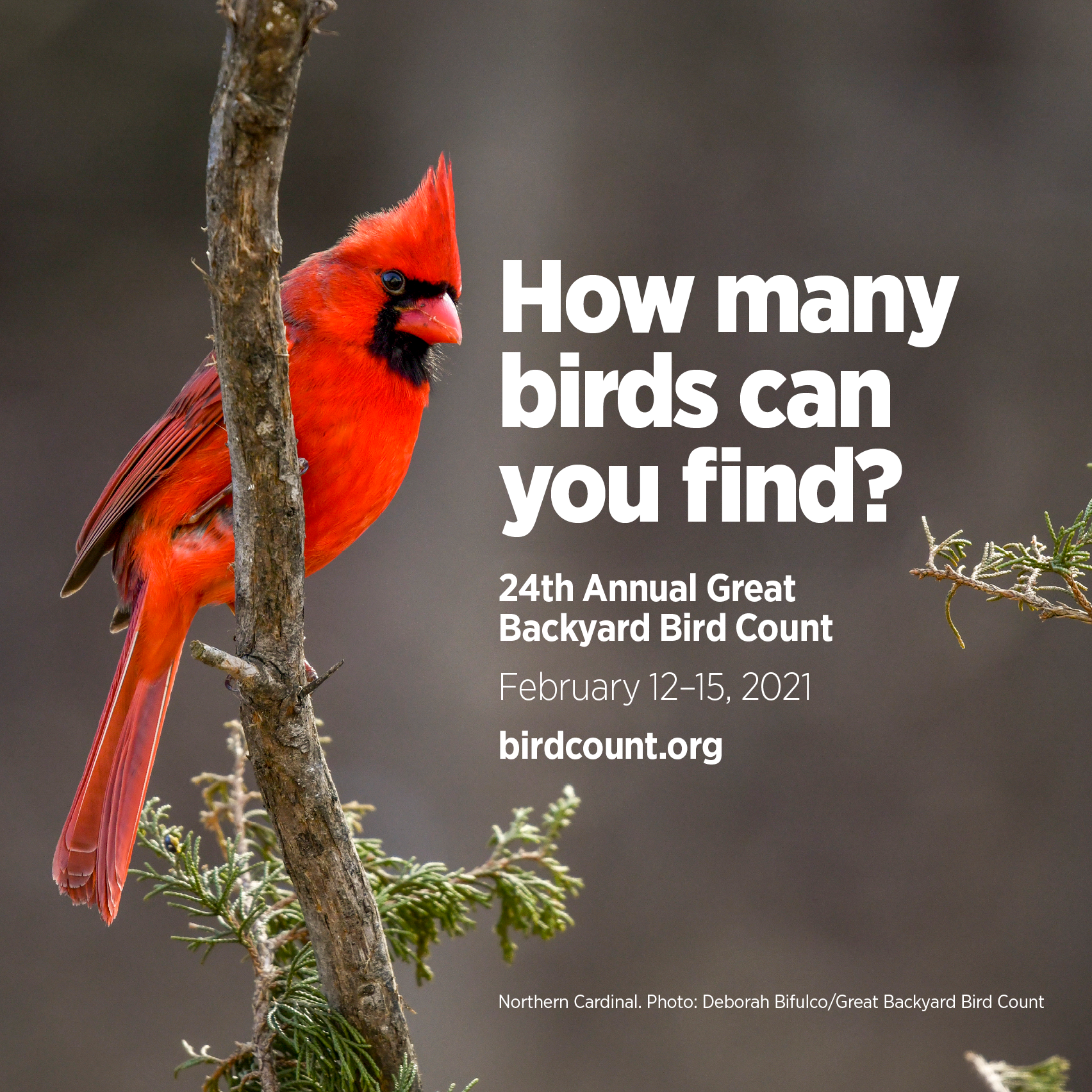The GBBC takes place February 12 through 15. Visit the new website.
 Blue Jay by Patricia Blyler, PA, 2020 GBBC |
“The GBBC is a simple, welcoming project that both new and veteran birdwatchers enjoy,” says David Bonter, Co-Director of the Center for Engagement in Science and Nature at the Cornell Lab of Ornithology. “Birds are everywhere and can be counted in backyards, neighborhoods, suburban parks, wild areas, and cities. Scientists need the eyes of the world to collect information about where the birds are.”
During the 2020 GBBC, birdwatchers set new records for the event, turning in nearly 250,000 lists of birds seen, from more than 100 countries, identifying nearly 7,000 of the world’s estimated 10,000 bird species. Data gathered by the GBBC and other survey projects highlight changes in the numbers and distribution of wild birds over time.
Birds make us happy.
 Tufted Titmouse by Deborah Bifulco, NJ, 2020 GBBC |
“By participating in the Great Backyard Bird Count, community scientists contribute data that we use to protect birds and the places they need, today and tomorrow,” said Chad Wilsey (@ChadBWilsey), Ph.D., chief scientist at National Audubon Society. “In return, studies tell us that pausing to observe birds, their sounds and movements, improve human health. Participating in the Great Backyard Bird Count is a win-win for birds and people.”
This year there is a new way to send in an observation—through the Cornell Lab’s free Merlin Bird ID app. If you use the app during the GBBC and save a bird you’ve identified, it is also counted for the GBBC. As in the past, using the eBird platform on your mobile app and computer are still great ways to enter your data. Visit our How to Participate page to learn more about entering your bird sightings.
Just dive right in!
 Canada Jay by Debbie Schultz, MN, 2020 GBBC |
“Why not try something new?” says Steven Price, President of Birds Canada. “If you’re an experienced birder, set yourself a challenge to see how many new birders you can get interested in counting on their own patch. If you are just beginning to learn about the birds in your yard, see if you can identify 3 new birds (or 5 new birds or 10 new birds!). Check out the resources on The Roost for more suggestions.”
Stay safe.
All participants are urged to watch birds safely in light of the ongoing Covid-19 pandemic. That means following the health and safety protocols for your area, not gathering in large groups, and wearing masks if you’re unable to remain at least six feet apart from others. To learn more about how to take part in the Great Backyard Bird Count, visit birdcount.org.
The Great Backyard Bird Count is a joint project of the Cornell Lab of Ornithology, National Audubon Society and Birds Canada and is made possible in part by founding sponsor Wild Birds Unlimited.
# # #
Editors: Download images to use with GBBC stories. Images must be credited to the photographer named in the title of each image file.
Download social media graphics.
Media Contacts:
• Pat Leonard, Cornell Lab of Ornithology, [email protected]
• Kerrie Wilcox, Birds Canada, (519) 586-3531 ext. 134, [email protected]
• Nicolas Gonzalez, Audubon, (310) 897-9836, [email protected]



